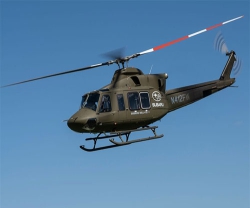China will increase its defense spending by 7.2% this year, slightly outpacing last year’s increase and faster than the government’s modest economic growth forecast, as Premier Li Keqiang called for the Armed Forces to boost combat preparedness.
The national budget released on Sunday showed 1.55 trillion yuan ($224 billion) allocated to military spending.
The defense budget will be closely watched by China’s neighbors and the United States, who are concerned by Beijing’s strategic intentions and development of its military, especially as tensions have spiked in recent years over Taiwan.
In his work report to the annual session of parliament, Li said military operations, capacity building and combat preparedness should be “well-coordinated in fulfilling major tasks”.
“Our Armed Forces, with a focus on the goals for the centenary of the People’s Liberation Army in 2027, should work to carry out military operations, boost combat preparedness and enhance military capabilities,” he said in the state-of-the-nation address to the largely rubber-stamp legislature.
This year’s hike in defense spending marks the eighth consecutive single-digit increase. As in previous years, no breakdown of the spending was given, only the overall amount and the rate of increase.
The spending increase outpaces targeted economic growth of around 5%, which is slightly below last year’s target as the world’s second-largest economy faces domestic headwinds.
Beijing is nervous about challenges on fronts ranging from Chinese-claimed Taiwan to U.S. naval and air missions in the disputed South China Sea near Chinese-occupied islands.
China staged war games near Taiwan last August to express anger at the visit to Taipei of then-U.S. House Speaker Nancy Pelosi.
Li Mingjiang, Associate Professor at S. Rajaratnam School of International Studies in Singapore, said defense spending outpacing the economic growth forecast showed China anticipates facing greater pressures in its external security environment, especially from the United States and on the Taiwan issue.
“Chinese leaders are clearly intensifying efforts to prepare the country militarily to meet all potential security challenges, including unexpected situations,” he said.
China, with the world’s largest military in terms of personnel, is busy adding a slew of new hardware, including aircraft carriers and stealth fighters.
Beijing says its military spending for defensive purposes is a comparatively low percentage of its GDP and that critics want to demonize it as a threat to world peace.
“The Armed Forces should intensify military training and preparedness across the board, develop new military strategic guidance, devote greater energy to training under combat conditions and make well-coordinated efforts to strengthen military work in all directions and domains,” Premier Li said.
Takashi Kawakami, a Professor of Takushoku University in Tokyo, said China would probably give priority to its nuclear capability.
“As China strengthens the new area of cognitive warfare over Taiwan, I think it will also use the budget to build up its cyber and space capabilities, as well as its submarine forces to target undersea cables,” he said.
China’s reported defense budget in 2023 is around one quarter of proposed U.S. spending, though many diplomats and foreign experts believe Beijing under-reports the real number.
The fiscal 2023 U.S. defense budget authorizes $858 billion in military spending and includes funding for purchases of weapons, ships and aircraft, and support for Taiwan and for Ukraine as it fights an invasion by Russia.
China has long argued that it needs to close the gap with the United States. China, for example, has three aircraft carriers, compared with 11 in active service for the United States. (Reuters; Photo: China’s Chengdu J-10 Vigorous Dragon Multirole Combat Aircraft © Wikipedia)




















